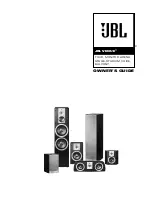
System
The bi-amplified GENELEC 1030A is a two
way active monitoring speaker designed
to produce high SPL output, low coloration
and broad bandwidth in a small cabinet size.
The 1030A is ideal for applications where
space is at premium such as Near Field
monitoring, mobile vans, broadcast and TV
control rooms, surround sound systems and
budget and home studios. Designed as an
active speaker, the 1030A contains drivers,
power amplifiers, active crossover filters and
protection circuitry. The Directivity Control
Waveguide™ (DCW™) technology used
provides excellent frequency balance even
in difficult acoustic environments.
Drivers
The low frequencies are reproduced by a 170
mm (6 1/2”) bass driver loaded in a 6.5 liters
vented cabinet. The -3 dB point lies at 52 Hz
and the frequency response extends down to
47 Hz (- 6 dB).
The high frequency driver is a 19 mm
(3/4”) metal dome. Uniform dispersion con-
trol is achieved with the innovative DCW
Technology pioneered by Genelec, which
also provides perfect phase and delay uni-
formity at the crossover frequency.
Both drivers are magnetically shielded.
Crossover
The active crossover network consists of two
parallel bandpass filters. Acoustically, the
filters are complementary and the slopes are
24 - 32 dB/octave. The crossover frequency
is 3.5 kHz. The active crossover controls
(‘treble tilt’, ‘bass tilt’ and ‘bass roll-off’) allow
this speaker to be exactly matched to any
room environment.
Amplifiers
The amplifier unit is mounted to the rear of
the speaker enclosure on quick release vibra-
tion isolators, to ensure rattle free operation
and long term reliability. The bass and treble
amplifier produce respectively 80 W and
50 W of short term power. The peak output
sound pressure level of the 1030A exceeds
115 dB at 1 m. The unit incorporates special
circuitry for driver overload protection. Vari-
able input sensitivity allows for accurate level
matching to console output section.
Installation
Each 1030A monitor is supplied with a
mains cable and an operating manual.
After unpacking, place the speaker so that
its acoustical axis (see figure 2) is aimed
towards the listening position. Do not place
the speaker in a horizontal position as this
may cause acoustical cancellation problems
around the crossover frequency.
Sufficient cooling for the amplifier must
be ensured if the speaker is installed in a
restricted space such as a cabinet or inte-
grated into a wall structure. The minimum
clearance for the amplifier is 10 centimeters
(4") to any object. The space adjacent to the
amplifier must either be ventilated or suf-
ficiently large to dissipate heat so that the
ambient temperature does not rise above 35
degrees Celsius (95°F).
Before connecting up, ensure that the
mains switch is off (see figure 4). Check
that the mains voltage selector is correctly
set (Models sold in Europe have a fixed 230
V setting). Audio input is via a 10 kOhm bal-
anced XLR connector, but unbalanced leads
may be used as long as pin 3 is grounded
to pin 1 of the XLR (see figure 3). Once the
connection has been made, the speakers are
ready to be switched on.
Setting the input sensitivity
The input sensitivity of the speakers can be
matched to the output of the mixing console,
or other source, by adjusting the input sensi-
tivity control on the rear panel (see figure 4).
A small screwdriver is needed for the adjust-
ment. The manufacturer’s default setting for
this control is -6 dBu (fully clockwise) which
Genelec 1030A Monitoring Speaker






















